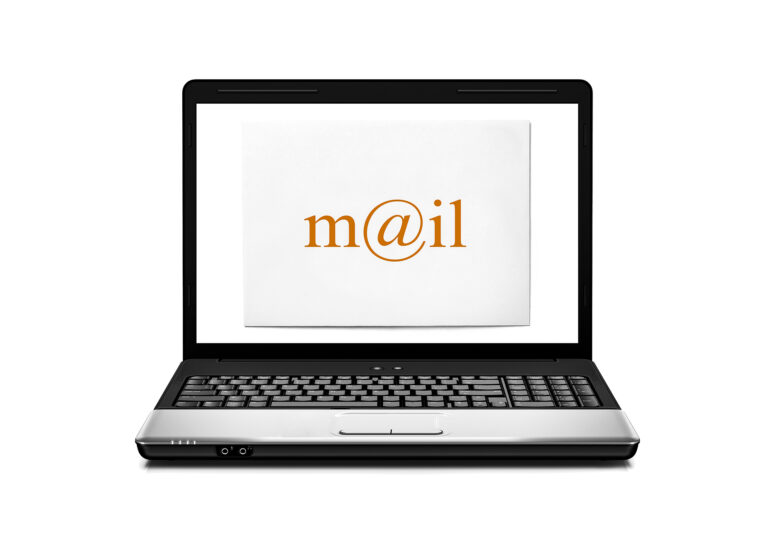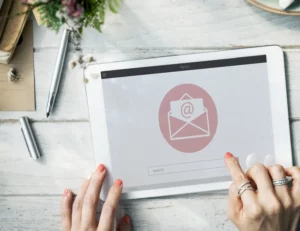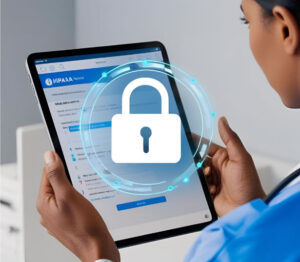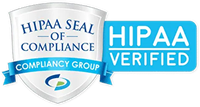Email is one of the most prevalent methods of communication for both individuals and organizations. However, because email messages often contain sensitive and confidential information, ensuring their security during transmission is more critical than ever. Email encryption is a fundamental security measure that protects your messages from interception, alteration, or unauthorized access, safeguarding your privacy in an increasingly vulnerable online environment.
S/MIME (Secure/Multipurpose Internet Mail Extensions) is a widely accepted standard for securing emails through encryption and digital signing. It provides a robust framework for ensuring both message confidentiality and message integrity—meaning that your emails are not only protected from prying eyes but also verifiably sent by you, with no alterations along the way. Recognized globally, S/MIME helps build trust in email communications for both personal users and organizations handling sensitive information.
This article will explore how S/MIME functions, its advantages, and the technical workflow involved in securing your email correspondence, empowering you to harness its full potential for safer digital communication.
Understanding S/MIME Email Encryption
S/MIME email encryption is a protocol that uses public key cryptography to secure email content and validate sender identity. At its core, it enables users to encrypt emails so that only the intended recipient, possessing the correct private key, can decrypt and read the message. Additionally, it enables digital signing, ensuring the message originates from the claimed sender and has not been tampered with.
The principles behind S/MIME involve public key encryption and digital certificates. Each user has a public key, which can be shared openly, and a private key, kept confidential. When sending an encrypted email, the sender encrypts the message using the recipient’s public key. Only the recipient’s private key can then decrypt the message, creating a secure communication channel. Meanwhile, digital certificates—issued by trusted Certificate Authorities (CAs)—authenticate the identity of the sender and recipient, confirming their legitimacy and preventing impersonation.
S/MIME utilizes a hierarchical trust model, where certificates act as electronic passports, verifying the identities associated with each key pair. This combination of encryption and identity verification makes S/MIME a powerful tool for securing email communications in environments demanding high levels of confidentiality and trust.
The Benefits of Using S/MIME for Email Security
Adopting S/MIME email encryption provides several vital benefits for both personal and organizational communications:
Ensuring confidentiality: By encrypting email content and attachments, S/MIME guarantees that sensitive data remains private during transmission. Only recipients possessing the appropriate private key can decrypt and access the message, effectively thwarting eavesdroppers and malicious actors.
Authenticating sender and receiver identities: Digital certificates used in S/MIME facilitate the verification of the sender’s identity, significantly reducing risks associated with impersonation or phishing attacks. This authentication establishes trust between parties, ensuring recipients that the message originated from the claimed sender.
Enabling integrity checks: Digital signatures within S/MIME verify that the message has not been altered since it was signed. This ensures message integrity, giving both sender and recipient confidence that the content remains unchanged and authentic throughout transmission.
Together, these advantages make S/MIME a comprehensive solution for secure email communication, especially vital for industries like finance, healthcare, and government, where data security and trust are paramount.
How S/MIME Email Encryption Works
Understanding the technical workflow of S/MIME encryption helps clarify how it secures your emails from composition to delivery:
Certificate acquisition and installation: Users obtain a digital certificate from a trusted Certificate Authority (CA). This certificate contains their public key and identity information, which they install into their email client or device. This certificate establishes trust and enables others to verify an individual’s identity.
Generating and exchanging public keys: The sender and recipient exchange their certificates (or public keys) securely, often through a trusted certificate directory or direct exchange. This process ensures that each party has the authentic public key associated with the other.
The encryption and decryption process: When composing an email, the sender encrypts the message using the recipient’s public key. Upon receipt, the recipient decrypts it with their private key. This process guarantees that only the intended recipient can access the message content.
Signing emails with digital signatures: To verify authenticity and ensure message integrity, the sender signs the email using their private key. The recipient then uses the sender’s public key (embedded in their certificate) to validate the digital signature, confirming the message’s authenticity and that it has not been altered during transit.
This process, which involves encryption and digital signatures, establishes a comprehensive security setup that protects your email content and verifies the identities of all parties involved.
Obtaining and Managing S/MIME Certificates
How to Obtain an S/MIME Certificate: To start using S/MIME, you need a digital certificate issued by a trusted Certificate Authority (CA). There are two primary options:
- Free options: Many CAs, like Actalis or Let’s Encrypt (more common for server certs), offer free certificates, but free S/MIME certificates are less common and may have limited validation levels. Some providers, such as Comodo or StartCom, used to provide free personal S/MIME certificates; check current providers for options.
- Paid options: Reputable CAs like DigiCert, GlobalSign, and Entrust offer S/MIME certificates with extended validation, higher trust levels, and additional features (e.g., professional support, certificate management portals).
Steps to obtain:
- Choose a CA based on your needs and budget.
- Complete the registration process, which typically involves identity verification.
- Generate a Certificate Signing Request (CSR) through your email client or system.
- Submit the CSR to the CA, and upon approval, you’ll receive a certificate file (often in .p12 or .pfx format).
Best Practices for Managing S/MIME Certificates:
- Secure storage: Store your private key and certificate in a secure location, such as an encrypted drive or a hardware security module (HSM). Never share your private key.
- Renewals: Certificates have expiration dates (commonly 1-3 years). Set reminders for renewal to prevent lapses in security.
- Revocation: If a private key is compromised or suspect, revoke the certificate immediately via your CA’s management portal and replace it with a new one.
Maintaining a straightforward process for issuing, renewing, and revoking certificates ensures continued trust and security in your email communications.
Implementing S/MIME Encryption in Email Clients
Below are step-by-step instructions for setting up S/MIME encryption in popular email clients:
Microsoft Outlook:
- Obtain and install your certificate.
- Go to File > Options > Trust Center > Trust Center Settings.
- Select Email Security.
- Click Import/Export to import your S/MIME certificate.
- In the Email Security tab, click Import/Export to load your certificate.
- Select your email account, then click Settings, and choose your certificate for Signing and Encryption.
- Ensure “Add digital signature to outgoing messages” and “Encrypt contents and attachments for outgoing messages” are checked when composing an email.
Apple Mail (macOS & iOS):
- Import your certificate into the Keychain (on macOS).
- Open Mail.app.
- When composing a new message, click the Lock icon or Signature button.
- Choose your certificate in the Certificate dropdown.
- To sign or encrypt, select the appropriate options (sign/encrypt) when composing the email.
Third-party tools (e.g., Thunderbird + Enigmail):
- Install the Enigmail add-on.
- Import your S/MIME or PGP certificate into the security key manager.
- Configure Enigmail to use your certificate.
- When composing, select Sign and/or Encrypt options from the message toolbar.
General notes:
- Always verify your certificate’s proper installation.
- Before sending sensitive info, encrypt a test message and confirm decryption on the recipient’s side.
- For organization-wide deployment, consider centralized certificate management tools.
Challenges and Considerations for S/MIME Implementation
Common Challenges:
- Compatibility issues: Different email clients may have varying levels of support for S/MIME. Some older or less common clients may not handle certificates effectively, resulting in failed decryption or errors.
- User errors: Incorrect certificate installation, not selecting encryption options, or sharing invalid public keys can cause communication breakdowns.
- Certificate management complexity: Handling multiple certificates, renewals, and revocations can be burdensome, especially for large organizations.
Best Practices and Considerations:
- Organizational policy enforcement: Establish clear policies for certificate issuance, management, and usage. Automate distribution and renewal processes where possible.
- User training: Provide training sessions or documentation for staff on how to generate, install, and use certificates. Promote awareness of verifying signatures and handling errors.
- Scaling S/MIME for large enterprises: Use centralized PKI (Public Key Infrastructure) solutions to manage certificates, enforce security policies, and monitor usage.
- Regular audits: Periodically review certificate validity, implementation status, and compliance with internal policies and regulations.
By anticipating these challenges and establishing robust procedures, organizations can maximize the security benefits of S/MIME while minimizing user frustration and operational risks.
Comparing S/MIME with Other Email Encryption Methods
When choosing an email encryption method, understanding the differences between S/MIME and alternatives, such as PGP (Pretty Good Privacy), is crucial for selecting a solution that best fits your needs.
S/MIME (Secure/Multipurpose Internet Mail Extensions) is a standard built into many enterprise email systems. It leverages digital certificates issued by trusted Certificate Authorities (CAs), providing seamless integration with various corporate email platforms, including Outlook and Apple Mail. S/MIME offers public key encryption, digital signatures, and trusted identity verification, making it ideal for organizations requiring high assurance and standardized management.
PGP (Pretty Good Privacy) is an open-source encryption protocol that utilizes a public/private key model, relying on a web of trust rather than centralized certificate authorities. It provides flexible, end-to-end encryption and is popular among individual users and privacy advocates for its independence from corporate PKI systems.
Pros of S/MIME:
- Built-in support in many commercial email clients
- Managed by trusted CAs, enhancing trustworthiness
- Centralized management is suitable for organizations
- Supports digital signatures and encryption within familiar interfaces
Cons of S/MIME:
- Requires obtaining and managing certificates, often through paid providers
- Less flexible for individual or ad-hoc users outside enterprise environments
- Certificate management can be complex at scale
Pros of PGP:
- Open-source and free; no reliance on CAs
- Highly flexible and customizable
- Widely used across various platforms and email clients
Cons of PGP:
- Generally requires manual key management
- Trust relies on a web-of-trust, which can be less formal than PKI
- User-friendliness varies, creating adoption barriers
Summary: Choose S/MIME if you prefer a plug-and-play, certificate-managed system suitable for organizations with formal trust policies. Opt for PGP if you want maximum flexibility, independence, or are in a privacy-sensitive context, and you’re comfortable with managing keys.
The Future of S/MIME Email Encryption
As cryptography and cybersecurity continue to evolve, so will S/MIME and related encryption standards. Future trends may include:
- Enhanced cryptographic algorithms: Transition to quantum-resistant algorithms to secure against emerging threats from quantum computing. Protocols may adapt to incorporate these new standards.
- Automation and simplified management: Integration with cloud-based PKI solutions and automation tools to streamline certificate issuance, renewal, and revocation.
- Greater interoperability: Seamless encryption across platforms and devices, reducing configuration barriers and improving user experience.
- Integration with other security technologies: Combining S/MIME with biometric authentication, AI-driven threat detection, and blockchain for identity verification.
Impact of emerging technologies:
- Quantum computing could potentially render current encryption algorithms vulnerable. S/MIME protocols may need to adopt quantum-safe cryptography standards to maintain privacy and integrity.
- Artificial Intelligence could help identify malicious signatures or fraudulent certificates, protecting trust in digital certificates.
- Blockchain technology might be used to enhance the trust mechanisms behind certificate issuance and validation.
Overall, S/MIME is likely to remain vital but will need continual evolution to address future threats and leverage innovations in encryption and identity management.
Final Thoughts
S/MIME plays a crucial role in securing email communication, particularly for businesses and professionals handling sensitive information. Its robust framework of encryption, digital signatures, and certificate management provides confidence in message confidentiality, authenticity, and integrity. When properly implemented, S/MIME ensures that digital correspondence remains trustworthy and private, reinforcing trust between sender and recipient.
Understanding the capabilities and limitations of S/MIME empowers users and organizations to make informed decisions about their email security strategies. By leveraging S/MIME’s strengths and complementing it with best practices, enterprises can significantly mitigate the risk of data breaches and uphold compliance standards.
Now is the time to evaluate your current email security practices. If you haven’t already, consider adopting S/MIME email encryption to enhance privacy and trust in your digital communications. Assess whether your organization’s email platforms support S/MIME, and explore options for obtaining and managing certificates efficiently.
For a smooth implementation, seek guidance from IT professionals or cybersecurity specialists experienced in certificate management and email security protocols. They can help you navigate setup, compliance, and ongoing management — ensuring your organization benefits from the peace of mind that comes with strong, reliable email encryption.






